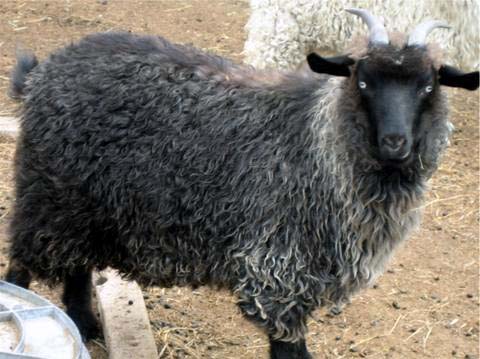Type the name of the breed you're looking for below
[wpdreams_ajaxsearchlite] Don't see the breed your're looking for? Click here and let us know!
Nigora goat
| Place of Origin | United States |
| Origin | Nigora Goats originated in the United States in the early 1990s. Early Nigoras contained a mixture of Nigerian Dwarf, white and coloured Angora goat bloodlines, as well as some small grade fiber goat breeding; today's Nigoras may also contain the bloodlines of registered Swiss type Mini Dairy breeds. |
| Purpose | Milk, Fiber, Pet |
| Characteristics | The conformation, character and style of the modern Nigora should be that of a healthy, proportionate animal: It should exhibit a rectangular build, refinement, bone structure, substance and angularity typical of a well formed miniature dairy goat, while also producing three distinct types of fleece. The fleece varies between mohair fiber and cashmere wool in character, with cashgora fiber being a blend of characteristics between the first two types. Nigora Goats are generally calm, amiable, and laid back. Due to their good nature and size Nigora Goats are sold as pets, and well as milk and fiber animals. Bloodlines/Breeding: Nigerian Dwarf Dairy Goats and/or registered Swiss Type Mini Dairy Breeds (i.e.: Mini Alpine, Mini Saanen, Mini Sable, Mini Oberhasli, Mini Toggenburg) crossed with any recognized Angora goat breed (i.e.: Commercial White, Colored Angora, or Navajo/Heritage Angora); there are also Grade and Breeding Stock programs for Nigoras. All goats applying for registration must meet the Nigora Breed Standard as set forth by the American Nigora Goat Breeder's Association. Height: The suggested height range for Nigoras is a minimum of 19" (50 cm) with a maximum of 29" (74 cm); does are generally smaller than bucks on average. Ears: Ear set may vary between erect (like Nigerians and the Swiss type Mini Dairy breeds) or dropped (like the Angora) but without being pendulous; both ears should match in adult animals. Eyes: Any colour. Colour/Markings: All colours and patterns found within the Nigerian, Angora, or Swiss type Mini Dairy breeds are allowed. Horns: There is no preference as to whether Nigoras are disbudded or remain horned; Naturally polled animals are allowed. Fleece/Fiber: The Nigora exhibits a primarily "cashgora" type fleece with three distinct types-- Type "A": Leans toward mohair characteristics (some individuals may exhibit full mohair). Type "B": Blend of mohair and cashmere (typical cashgora fiber). Type "C": Leans toward cashmere characteristics (some individuals may exhibit full cashmere). Sub-Types include "A/B" and "B/C" for fleeces that fall between types. Full descriptions of the various fiber types are found in the ANGBA Standard. Temperament: As a general rule, a Nigora should have a calm, amiable, laid back disposition and be neither aggressive nor excessively fearful when properly socialized. Disqualification From Registration: Any goat that does not fit the Nigora Breed Standard for type and conformation, including goats containing any of the following breeds: The offspring of FULL SIZED Standard Dairy goats x any allowed fiber breed; Meat goat breeds (i.e.: Boer, Kiko, Kinder, Spanish, etc.); Nubian or LaMancha of ANY size; and Myotonic breeds of any kind. |
| Other Considerations | Nigora Goats are produced, and promoted, as particularly suited for the micro-eco farming niche, Urban goat keeping, small homesteading, personal family use, and as pets. Their friendly dispositions, smaller size, and general ease of care also makes the Nigora suitable for children and prospective senior or special needs goat owners. |



